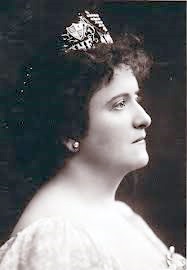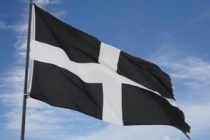Fanny Moody – diva, opera singer, businesswoman, ‘the Cornish Nightingale’

Fanny Moody was born in Fore Street, Redruth (where the post office now is) in 1866, one of 13 children of a Redruth photographer, James Moody.
While she was still at school Mrs Basset of Tehidy recognised her talent and paid for her to go to London to learn to sing properly.
Her first break came in 1887 when she sang for the Carl Rosa Opera Company's opera ‘The Bohemian Girl’. Whilst singing for them, she met and married Charles Manners who was of Irish parentage and later formed this Moody-Manners Opera Company.
She became known as ‘the Cornish Nightingale’ and was presented with a tiara with the Cornish coat of arms picked out in diamonds.
She sang under Augustus Harris at Covent Garden and Drury Lane (1890-94). Her roles included Eileen in 'The Lily of Killarney', Micaela in 'Carmen", Marguerite in 'Faust', as well as leading roles in 'La Juive', 'I Puritani' and several Wagner operas.
She travelled extensively abroad and sang the songs from home to the Cornish exiles and for the miners in South Africa in 1896.
History informs they forgot all their rivalries from home (for example, that Camborne and Redruth people are traditional foes) and the whole crowd that night, big burly mining men, left very quietly at the end of the concert, some with a tear in their eye.
By 1902 there were two Moody-Manners touring companies. The larger of the two had 175 members and gave London seasons in 1902 and 1903 at Covent Garden, in 1904 at Drury Lane, and in 1907 and 1908 at the Lyric Theatre when the repertoire included The Merry Wives of Windsor, The Marriage of Figaro, Tannhäuser, Lohengrin, Tristan and Isolde, Faust, Cavalleria rusticana and Pagliacci, Madame Butterfly, Aïda and Il trovatore.
There were Moody-Manners tours not only of Britain but also of North America and Africa.
This organisation remained one of the most important providers of opera in Britain until 1916, and at its peak toured three companies simultaneously.
She donated her tiara for auction in the Second World War with the proceeds going to the Red Cross help the wounded.
She died in Dublin in 1945.
This article has been kindly provided by Kernow Matters to Us and is part of the series on Famous Folk of Kernow (Cornwall).
- Cornish
- English
- Log in to post comments





